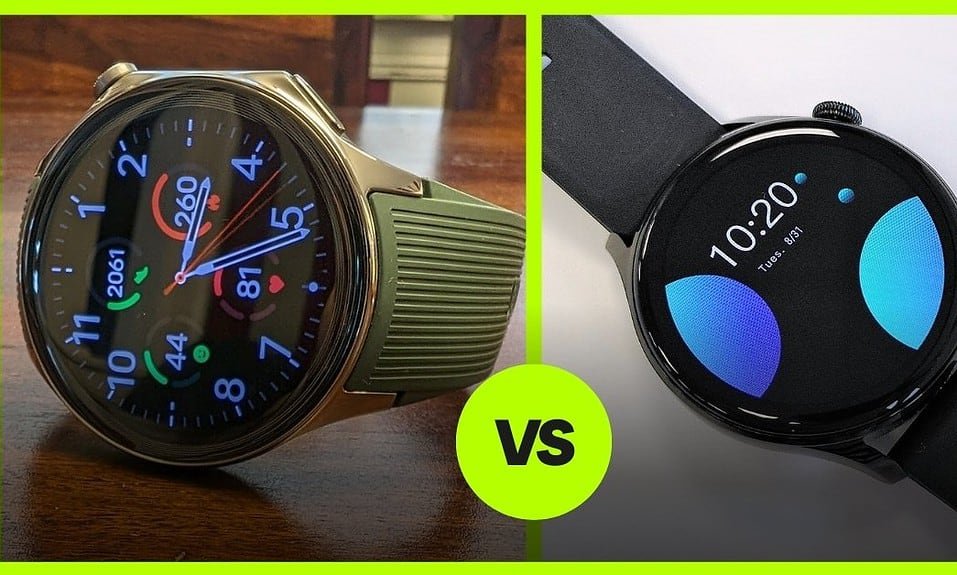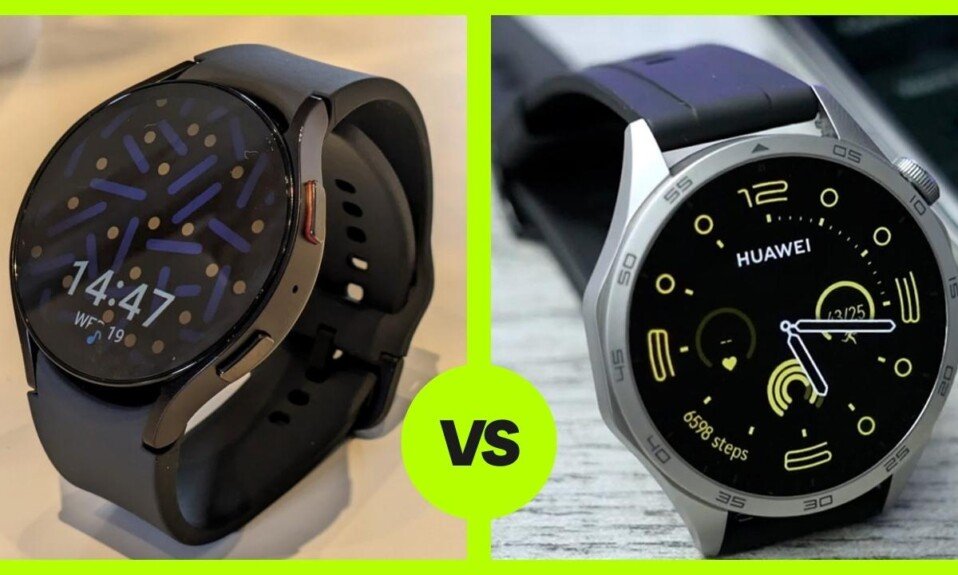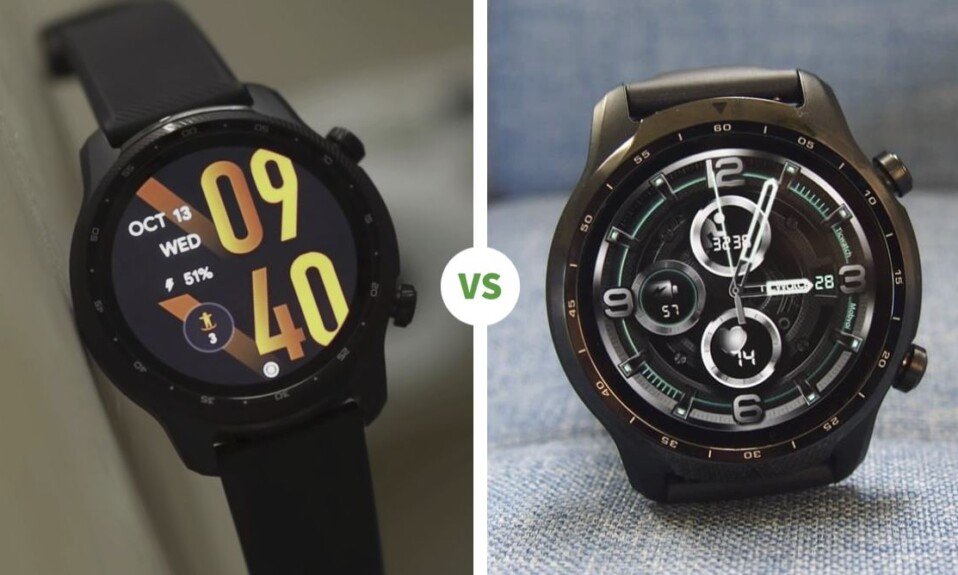Connected bracelets are popular in the world of smartwatches since not everyone necessarily wants to have a large device on their wrist.
The Fitbit Charge series of connected bracelets have been a success story since 2014 (more than 40 million units sold). Therefore, it is not surprising to see Fitbit continuing to evolve this range, in parallel with the development of its Versa 3 and Sense connected watches.
In the official presentation, Fitbit emphasised stress management, physical preparation, health and wellness abilities. Fitbit didn’t think of the Charge 5 as a sports accessory but rather as a holistic solution to feeling better.
The Charge 5, therefore, marks a considerable leap from the current Charge 4. Put, Fitbit has squeezed an AMOLED display and all of Sense’s sensors into the format of a smartwatch that can rival virtually any smartwatch in terms of functionality.
The new Fitbit Charge 5 was officially presented and impressed with a long list of previously known features from full-blown smartwatches. However, you will need patience before you can use all functions.
The Charge 5 marks a huge leap from the current Charge 4. Put simply, Fitbit has squeezed an AMOLED display and all of Sense’s sensors into the format of a smartwatch that can rival virtually any smartwatch in terms of functionality.
| PROS | CONS |
| Attractive design with metal case | No Spotify support |
| AMOLED color touchscreen | More Expensive |
| Swim-proof to 50 meters | No music storage |
| Fitbit Pay support | |
| Solid battery life |
Design
The big difference between the Fitbit Charge 5 and the Charge 4 is in the display. The Charge 5 is twice as bright, and you can see it at first glance.
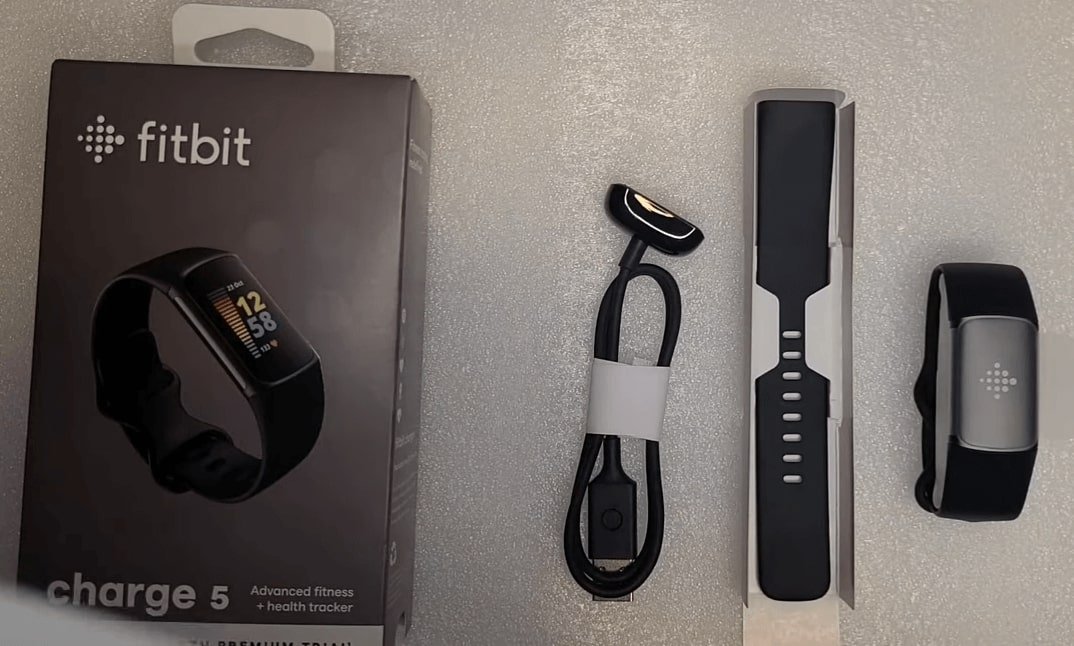
The wristband format is retained, but Fitbit has incorporated an AMOLED color touchscreen display for the first time on a Charge. Although not much has changed, the design gains in quality with a 10% thinner metal case. This development was made necessary to integrate electrodes for bioelectric and electrocardiogram impedance sensors.
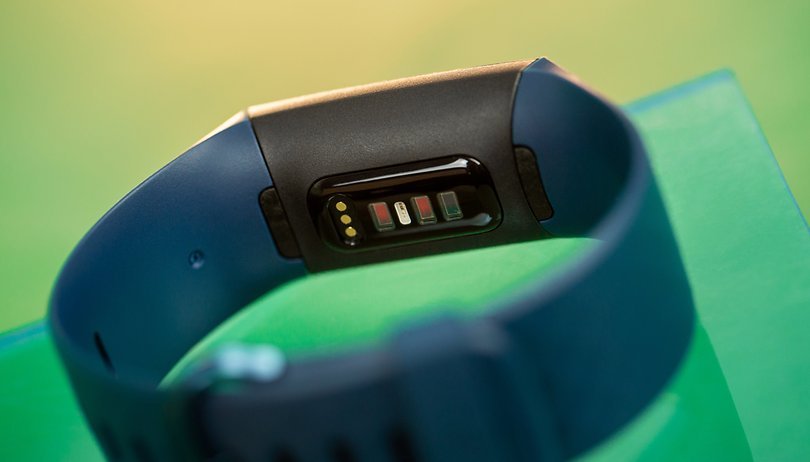
The screen can be permanently on or set to auto-off mode (saves battery). The bracelet is equipped with a quick replacement system that allows you to change color and material as you wish.
As expected, Fitbit has completely revised the Charge 5, taking inspiration from the recent Fitbit Luxe launched earlier in 2021. We find a stainless steel case with a bright AMOLED screen, which corrects the main complaint about Charge 4. Newly, and it’s a good idea, the screen is always on, which means there will be no black and dead areas on the wrist. The Charge 5’s screen is 11% larger than that of the Charge 4, and the device itself is 1mm longer but 1mm thinner.
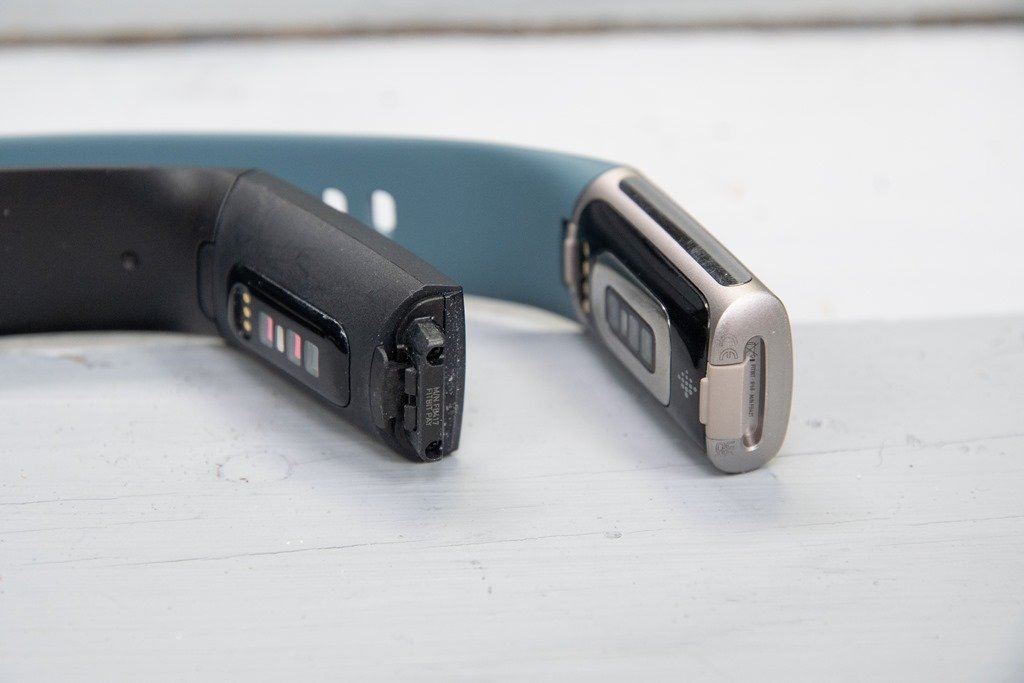
The Charge 5 case is made of aluminium, glass and resin. The strap is made of silicone with an aluminium buckle.
- 21.9 3mm x 14.7 5mm AMOLED display
- Screen resolution is 326 PPI (pixels per square inch)
- Stainless steel case (black, silver, gold)
- 2 strap sizes: for 130 to 170 mm or 170 to 210 mm wrists.
- Weight: 28g
- Dimensions: 36.7mm long x 22.7mm wide x 11.2mm deep.
- Waterproof up to 50 meters.
- Colors: Graphite, Lunar White/Soft Gold, and Steel Blue/Platinum
- Battery Life: 7 Days
The Charge 5 comes in three finishes in Platinum (Silver), Gold and Black, giving it a unisex look that was less obvious on the Luxe. There are also a plethora of bracelet options.
Features of Fitbit Charge 5
- Integrated GPS + GLONASS
- SpO2: level of oxygen in your blood.
- AED sensor : electrodermal activity (stress)
- ECG: electrocardiogram or heart rate
- Automatic tracking of 20 training modes
- Sleep analysis
- Menstrual cycle tracking
- NFC chip with Fitbit Pay : pay for your purchases by placing your bracelet near a terminal (no need for your smartphone).
- Vibrating motor
- Ambient light detector
- Notification of calls, SMS, calendar, social networks …
- Bluetooth connection
24 sports profiles are available, with or without GPS. Fitbit Premium brings together no less than 200 recorded sessions from partners like Les Mills.
But beware, the Charge 5 is not intended for preparing trails or big races. Autonomy in GPS recording is only 5 hours. In everyday use, it can last up to 7 days using the automatic screen off mode.
Every morning, Fitbit will announce a Daily readiness score (I don’t know yet how they will translate this into French). This score is calculated from the activity history, the cumulative sleep over the last few nights and the heart rate variability measured in the previous night.
Interestingly, a little pedagogy will accompany this score to explain to you why it is so high or so low and whether you should focus on physical activity or, instead, recovery.
- Coach-designed cardio sessions if your score is high
- Yoga or meditation sessions if your score is low
Heart rate variability is also used to measure respiratory rate.
The Electrodermal Activity Sensor measures electrical activity on the surface of the skin to detect stress. To put it simply, you’ve probably all experienced sweaty palms before an interview or exam. This humidity will increase the conductivity of the skin, which this sensor will detect.
Fitbit Premium then offers 300 relaxation sessions from partners like Calm, Breethe or Aura.
An electrocardiogram can perform with Charge 5. The data will be presented in a pdf file which (theoretically) can be sent to a doctor. It is also possible to set abnormal heart rate alerts (too high or too low) which work 24 hours a day.
Sleep tracking also comes with a score and smart wake-up (vibrations that wake you up at the right time before falling back into a deep sleep).
- The Daily readiness score will only be available after an upcoming update. It requires a Fitbit Premium subscription.
- The application for performing ECGs will only be available after an upcoming update and in certain countries only (France, Switzerland, Belgium and Canada are among these countries)
The good news is that the first six months of Fitbit Premium are free with a Charge 5.
Otherwise, the Charge 5 receives smart notifications (SMS, applications, incoming calls, etc.) and allows you to respond with pre-recorded messages via an Android smartphone.
Contactless payment is also possible with Fitbit Pay.
Functions of a Connected Watch
The Charge line has always featured the most advanced features of the Fitbit line. But, it has lagged behind the Fitbit Sense health watch since its launch in 2020. However, Fitbit took us by surprise, adding all of the best features of its flagship line and putting them in the form factor of the fitness tracker.
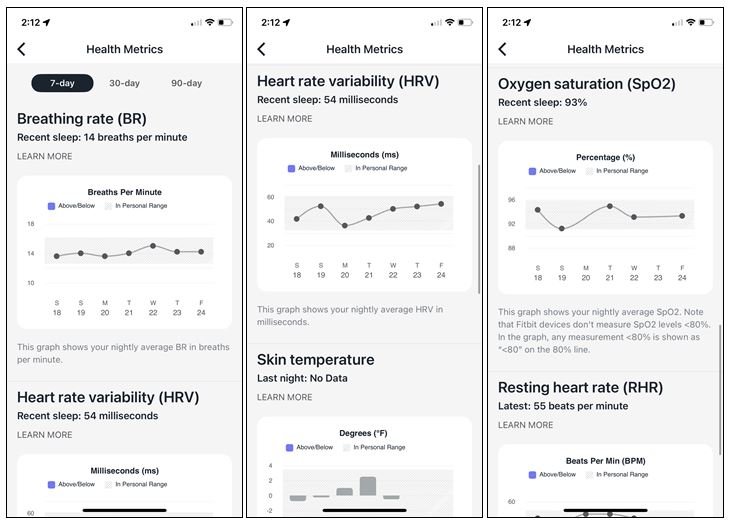
ECG
This means an ECG sensor for detecting abnormal heart rhythms, which will produce a PDF graph of your heart rate, shown to your doctor. The ECG feature won’t be available at launch, but it will arrive soon after, according to Fitbit.
AED
The Electrodermal Activity Sensor (EDA or AED) can detect stress reactions from tiny changes in your skin’s sweat. It is also present on Charge 4. Use the Wrist AED Scan app to get your AED.
GPS, SpO2 and temperature
This sensor is in addition to the sensors already present on the Charge 4:
- GPS (Track pace and distance in real-time without your phone with built-in GPS while you exercise outdoors, then view a map of your training route in the Fitbit app.
- Skin temperature. Track how your skin temperature changes each night to identify potential signs of changes in your body, such as fever or ovulation.
- SpO2
- Score and sleep phase. Sleep quality with a daily sleep score and graphs showing the time spent in light, deep and REM sleep stages.
- Menstrual cycle monitoring. Get to know your body better by using the Fitbit app to record your period, note your symptoms, and see your cycle trends. In addition, you benefit from a gentle awakening. This mode allows you to get up feeling rested thanks to the intelligent alarm clock, which is triggered during an optimal phase of sleep, at most 30 minutes before the scheduled time.
20 training follow-ups
The Charge 5 also maintains 20 workout-tracking profiles. Forgot to start tracking? No problem. SmartTrack automatically recognizes and records your activities such as elliptical trainer, running, swimming. Auto exercise detections and all the advanced sleep detection and high/low heart rate notification features you’ve come to expect from a Fitbit device.
Set personal goals for your runs, hikes and more, then see real-time stats to help you maintain your pace or stay in your target heart rate zone
Software improvement with your score of the day
And the changes aren’t just about hardware. The daily readiness score appears with the Fitbit Charge 5, which will be deployed to all Fitbit devices in the dashboard.
This new score indicates how ready you are to train and is aimed at those who want to challenge themselves.
Like the stress management and sleep scores, the Daily Readiness Score is constructed from three data points: activity/effort, sleep duration and quality, and heart rate variability (HRV), monitored for deep sleep. A personal baseline is created, which evolves as you improve.
Based on this score, Charge 5 will suggest when to exercise and at what intensity.
It will offer you personalized workouts from Fitbit Premium’s library, whether it’s a hard training course (HIIT) when your body is ready, an active recovery workout, or even mindfulness training.
Battery Life
For the charging system, the bracelet comes with a magnetic charging cable. The charger is fine, but it’s still different from the brand’s other bracelets. Fitbit will opt for a standard system with a single charging cable for all of its devices.
According to Fitbit, it retains the 7-day battery life of the Charge 4, although using an always-on display should have reduced that duration.
Conclusion!
The Charge 5 is not intended for athletes looking for a stopwatch on a race but for active or passive people who want to be accompanied to improve their lifestyle.
Fitbit is aiming for with the Daily readiness score. Instead of having a connected bracelet that measures a whole bunch of data and balances it on our face, the Charge 5 + Fitbit Premium combination will take care of the analysis, the explanation and the resulting suggestions. We are getting closer to the virtual coach there.
We can also clearly see that Fitbit is pushing towards a subscription solution (Fitbit Premium) instead of selling devices. The subscription is the goose that lays the golden eggs in all sectors at the moment—Apple, Netflix, Microsoft, etc.

Fitbit has confirmed its merger with Google and Wear OS for connected watches. But this is not yet the case for Charge 5. The CEO has not expressly said that the next connected watch from Fitbit (Versa 4?) Will run on Wear OS. He said Fitbit would bring its sports and health tracking features to Wear OS smartwatches (Google Pixel Watch?).

